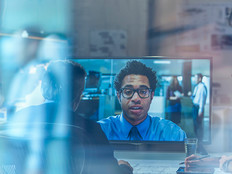How Feds Can Use Videoconferencing to Make Meetings More Accessible
Federal workers who work in Northern Virginia or commute to offices in Washington, D.C., or Maryland will likely need to conduct more virtual meetings next summer, thanks to a planned shutdown of several Metro stations by the Washington Metropolitan Area Transit Authority from Memorial Day to Labor Day 2019.
Thankfully, more agencies are getting comfortable with telework technologies, which not only enable remote work but can lead to improved morale and may help the government attract and retain employees considering the private sector. For example, Lacey Dingman, the U.S. Securities and Exchange Commission’s chief human capital officer, tells FedTech that key element of the SEC’s telework strategy include video cameras that allow face-to-face interaction among distant workers, as well as teleconferencing tools such as WebEx and Cisco Jabber.
And the U.S. Citizenship and Immigration Services has found that a robust digital workplace and a strong remote work program help the agency compete for workers. Employees are provided with equipment, including laptops with videoconferencing, servers and basic printers. “USCIS can recruit from a wider geographic area, thereby drawing on a larger talent pool,” Gwen Simmons, chief of worklife and employee programs, explains in a FedTech article. “Many employees view flexibility as a form of compensation.”
An increasingly mobile workforce has led to a significant change in the way agencies meet. It has given rise to the modern meeting. And with distributed workers across the world or just across Washington, federal IT leaders have started to recognize the impact of the modern meeting by integrating videoconferencing capabilities as a key component of their mobile strategy.
Although videoconferencing might have evolved out of necessity, it has become much more than a stop-gap solution. One of the greatest paradoxes of modern meetings is that despite being more dispersed than ever, teams can actually be more connected. This move toward video collaboration is only going to increase. The modern meeting is also becoming more dynamic. Videoconferencing allows users to include participants with mobile phones, tablets and desktop browsers with a high-quality output, and it lets them present, share and interact with a variety of content in real time.
A number of physical, cultural and economic factors led to the rise of the modern meeting:
SIGN UP: Get more news from the FedTech newsletter in your inbox every two weeks!
Videoconferencing Allows Feds to Take Meetings Anywhere
Teams aren’t just spread across disparate offices today. How they work is fundamentally different. Whether it’s from home or a coffee shop, videoconferencing technology means that meetings can virtually happen anywhere. Videoconferencing can make meetings feel more personal, and make employees more connected to their teams.
Technology Is More Accessible to Agencies
Today it’s easier than ever to buy high-end equipment such as cameras, and devices come with incredible cameras built right in. Plus, LTE is giving people everywhere the ability to connect anywhere.
Collaboration Tech Has Evolved
The modern meeting is supported by technology that’s simpler and more dynamic than ever. Users can share information, pause and start meetings, record, and so much more with solutions that make videoconferencing better, in many ways, than face-to-face interactions.
Feds Can Get Work Done at a Moment's Notice
When we talk about work today, we think less about the office and more about what is being produced. Videoconferencing technology is giving federal workers the increased ability to produce quality results regardless of surroundings and at a moment’s notice.
Agencies Must Train Workers on New Collaboration Tools
To get the most out of the modern meeting, organizations need to successfully integrate and adopt solutions that work well both inside and outside of the office. But integration remains only one of several hurdles to navigate. Agencies must also guide teams through the adoption process with training that dives much deeper than an email or tutorial video. Often, we assume that workers are more tech savvy than they are. Making sure they understand the technology is a critical step.
Additionally, BYOD has introduced a new set of challenges for organizations. Any videoconferencing solution has to work across all devices — even if half of an organization works on Apple and the other half on PCs. Giving every team member an even playing field, regardless of device or platform, is essential.
The modern meeting has the potential to support the changing way that organizations and workers collaborate. But that’s just the start. They’re giving workers a greater sense of connection and freedom.









